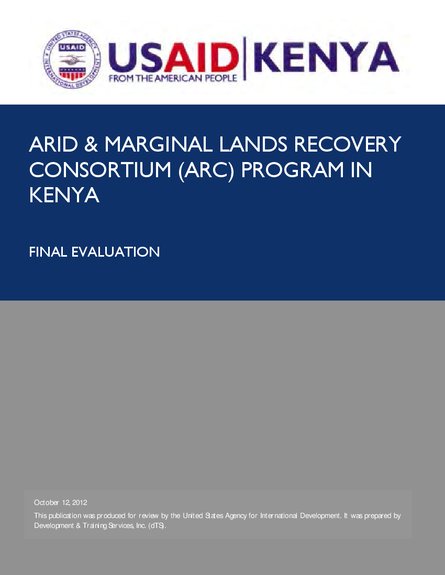
The Arid and Marginal Lands Recovery Consortium (ARC) Program in Kenya was a three-year program that ran from 2009-2012, in response to the drought of 2008/9 and the resulting food crisis in Kenya. The goal of the project was to sustain access to food in vulnerable rural communities through enhanced resilience to shocks. The specific objectives of the program were to increase agricultural productivity, to protect and diversify Household (HH) asset bases, and to strengthen livelihood options to increase HH purchasing power.
The program benefited 663,778 individuals, of a total population of 1,994,555, in targeted areas. The ARC program initiated activities in early 2009 with $15m in funding from the United States Agency for International Development (USAID), Office of United States Foreign Disaster Assistance (OFDA), with leadership for implementation by Food for the Hungry Kenya (FH), in collaboration with four partners: World Vision, (WV) CARE, Catholic Relief Services (CRS), and Action Against Hunger (ACF). Partners worked at strategic locations in targeted areas to assist the most vulnerable pastoralist and marginal farming populations across a significant portion of Kenya.
The ARC program concluded in June of 2012, but OFDA is funding a fourth year with Financial Year (FY) 2012 funds. The USAID Kenya Mission has commissioned a final evaluation to judge the success of the ARC program in building resilience and strengthening and diversifying livelihoods through economic opportunities. The evaluation will be used to guide future Mission funding, particularly programs developed by the USAID Joint Planning Cell (JPC), which was established during the drought response in Kenya in 2011.
